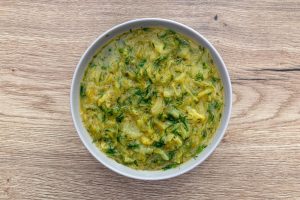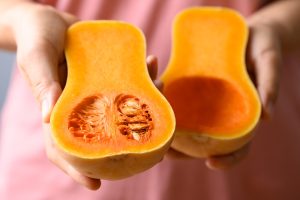Aussie Bites can fit into a weight-loss plan, but only if you manage portions carefully—they're calorie-dense, moderately sweet, and easy to overeat.
Keep reading for a closer look at what’s inside them, how they impact your goals, and how to enjoy them without derailing progress.
What’s Inside an Aussie Bite?
Aussie Bites are small, chewy oat-based snacks that pack a surprising nutritional punch into a tiny form.
Often sold in bulk at stores like Costco, they’re marketed as a wholesome, energy-boosting snack made from a blend of whole ingredients—but they’re more complex than they first appear.
Nutritional Snapshot
Each bite weighs about 26 grams and delivers approximately 130 calories.
That might not sound like much, but it’s more than double what many people expect from something that small. Here's the full macro breakdown:
- Fat: ~7 grams total, including 2 grams of saturated fat
- Carbohydrates: ~15 grams, with 7 grams of sugar and 2 grams of fiber
- Protein: ~2 grams per bite
While they’re not high in protein, they do offer a decent balance of macronutrients—especially when you factor in the ingredients behind them.
What They’re Made Of—and Why That Matters
The ingredient list is where Aussie Bites really stand out.
They're built around a mix of whole grains, seeds, and natural sweeteners that add up to more than just calories:
- Whole grains: Rolled oats form the base, providing steady-release carbs that can help maintain energy levels.
- Seeds: Flax, chia, and quinoa add texture and a dose of omega-3 fatty acids, plus a bit of protein and fiber.
- Dried fruits: Raisins and apricots contribute natural sweetness but also bring in extra sugar—something to keep in mind if you're watching your intake.
- Healthy fats: Canola oil and coconut are used as binders, offering unsaturated fats that support satiety, but they do add to the calorie count.
Micronutrient Highlights
These bites also sneak in a few nutritional bonuses:
- Iron: Useful for oxygen transport and energy metabolism, especially helpful for active individuals or those on plant-based diets.
- Potassium: Helps regulate fluid balance and supports muscle function.
- Omega‑3s: Sourced from flax and chia, they contribute to heart and brain health in small but meaningful amounts.
So, Are They “Healthy”?
It depends on how you define healthy.
Aussie Bites are undeniably nutrient-dense and made with whole-food ingredients, which is a plus.
But they also come with a higher calorie cost per bite than most people expect, and their sugar content—while partially from fruit—isn’t negligible.
In short, they’re not junk food, but they’re not a free pass either.
They walk a fine line: good ingredients, solid nutrition, and satisfying texture, but only when eaten with awareness.
The Calorie Density Dilemma
One of the most common mistakes people make with Aussie Bites is assuming that their small size means they're low in calories.
In reality, each bite packs in more than double the calories most people expect, which can quietly sabotage even the most careful weight-loss plan.
At just a couple of inches across, Aussie Bites look like they belong in the same category as low-cal granola bars or energy bites.
But looks can be deceiving—each one contains around 130 calories, and depending on the batch, that number can even creep higher.
For someone not tracking closely, grabbing two or three during a busy day can quickly add up to nearly 400 calories, all without feeling like much was eaten.
The size plays a big psychological role here. We tend to associate “small” with “light,” which leads to underestimating their caloric impact.
One community member summed it up well after tracking their intake: “I had 3 yesterday, and 1 today… thought they were 50‑60 cals each… Nope. 130‑170ish CALORIES PER ONE.”
To be clear, this doesn’t mean they’re off-limits.
The density isn’t all downside—they’re filled with ingredients like oats, seeds, and coconut oil, which can help you feel fuller for longer.
Fats and fiber slow digestion, providing lasting energy and helping curb hunger.
In some cases, a single Aussie Bite might be more satisfying than a larger, lower-calorie snack made of refined carbs.
But that only works if you treat them as a snack to track—not a casual handful.
The real issue isn't the nutrition inside each bite—it's how easy it is to eat more than you intended without realizing the impact.
When something small tastes good and feels healthy, it’s easy to go back for seconds (or thirds) without a second thought.
If you're including Aussie Bites in a weight-loss plan, the takeaway is simple: awareness is everything.
Know what you're eating, log it when possible, and don't let the small size trick you into thinking it's insignificant.
When managed carefully, calorie-dense foods can work for you—not against you.
How Aussie Bites Can Work Against Weight Loss
Even though Aussie Bites are made with quality ingredients and offer some nutritional value, they come with a few drawbacks that can make weight loss more difficult if you're not paying close attention.
The issue isn't that they're “unhealthy”—it's that they’re easy to misuse in a weight-loss context.
First, portion control is critical. Each bite contains around 130 calories, so having three can easily cost you nearly 400 calories without providing the lasting fullness of a balanced meal.
Many people don’t think twice about grabbing a few at once, especially when they’re stored in a large container or left out for easy snacking.
Without deliberate limits, it’s surprisingly easy to go over your daily calorie target without realizing it.
Another factor to keep in mind is the sugar content. Each bite has about 7 grams of sugar, and roughly half of that comes from added sources—not just dried fruit.
While this isn’t excessive in isolation, it adds up quickly if you eat multiple bites in a day or are already getting sugar from other snacks, drinks, or meals.
For those following lower-sugar diets or trying to minimize processed sugars, this can be a stumbling block.
Then there’s the protein issue.
Aussie Bites contain only about 2 grams of protein per serving, which simply isn’t enough to keep most people satisfied for long.
Protein plays a big role in appetite control and maintaining muscle mass during weight loss.
When you eat a snack that’s mostly carbs and fats—even if they’re healthy ones—it may not hold you over the way something more balanced would.
That’s why using them as a standalone snack, especially on an empty stomach, often leads to another snack soon after.
It’s also worth noting that, while Aussie Bites are sometimes marketed or used as a grab-and-go breakfast, they’re not quite up to the task.
They don’t deliver enough protein or volume to stand in for a complete meal.
If you're trying to build a breakfast that sustains you through the morning, you'd need to pair them with something more substantial—ideally with added protein and volume, like eggs or a high-protein yogurt.
Ultimately, the ways Aussie Bites can work against weight loss mostly come down to how you use them, not what they are.
They're nutrient-dense, yes—but that doesn't automatically mean they're weight-loss friendly.
Left untracked or eaten mindlessly, they can become more of a setback than a smart choice.
How to Eat Aussie Bites With a Weight Loss Strategy

If you enjoy Aussie Bites and want to keep them in your diet while losing weight, you absolutely can—but it takes some planning.
These aren’t “grab and forget” snacks.
They’re dense, a bit sweet, and easy to overeat, which means intentionality matters more than anything.
The first thing to do is reframe how you view them.
Rather than treating Aussie Bites as a go-to, everyday snack or breakfast item, think of them as an occasional treat—something you enjoy in moderation, not a dietary staple.
Their calorie count and sugar content make them better suited for those moments when you need a small, satisfying bite between meals, not something to build your routine around.
To make them work for you instead of against you, pair them with a source of protein.
Aussie Bites are low in protein on their own, which limits their ability to keep you full for long.
But combined with something like Greek yogurt, cottage cheese, or a handful of almonds, they can become part of a more balanced and satisfying snack.
The protein helps curb hunger, while the fats and fiber in the bite provide slower-burning energy.
They can also be useful as pre- or post-workout fuel.
Their mix of carbs and fats makes them ideal for a quick energy boost before exercise or for replenishing energy after.
In these situations, your body is better primed to use those calories, and you’re less likely to store them as excess.
Another strategy: use them as a topping instead of the main attraction.
Crumbling half a bite over a bowl of plain yogurt or blending one into overnight oats spreads out the flavor and texture while keeping the calorie impact lower.
It’s a smart way to enjoy the taste and nutritional perks without going overboard.
Most importantly, track your intake honestly. Aussie Bites aren’t bad—but they are easy to misjudge.
If you treat each one like a 130-calorie dessert, log it, and move on, you’re far less likely to let them interfere with your progress.
Ultimately, the key is to stay in control. Enjoy them, but make each bite count.
When they’re treated as part of a plan instead of a mindless snack, Aussie Bites can actually support your weight loss goals—not derail them.
Smart Snacking: When and How to Use Aussie Bites
Knowing when and how to eat Aussie Bites can make all the difference in whether they support your goals or work against them.
They’re compact, tasty, and packed with energy—ideal for certain moments, but not a free-for-all snack.
One of the best times to reach for an Aussie Bite is during that mid-afternoon energy dip—the window when you’re hungry enough for something small, but not so close to your next meal that it’ll ruin your appetite.
In these moments, a single bite, especially if paired with something protein-rich, can help stabilize blood sugar and hold you over until dinner.
This is also when mindful snacking tends to matter most.
You’re more likely to graze unconsciously during busy parts of the day, so having a pre-planned, portion-controlled option can prevent extra calories from slipping in unnoticed.
To make that work, portion control has to be built in.
It’s easy to grab a handful, especially if you’re eating straight from the container.
Instead, consider pre-portioning them—put one or two in a separate container or bag and keep the rest out of reach.
This small shift helps limit temptation and keeps snacking intentional. For many people, just having to pause and open another container is enough of a cue to stop and reassess.
If you’re looking for ways to incorporate Aussie Bites beyond just eating them on their own, there are a few smart, structured options:
- Crumble one over a high-protein yogurt bowl to add texture and flavor without doubling the calories.
- Include a bite as part of a larger, balanced snack plate—paired with a boiled egg, raw veggies, or a piece of cheese. This adds variety and volume without overloading on sugar or carbs.
- Use them strategically around workouts, when your body can use the quick-burning carbs and fats more efficiently.
If you’re on a low-sugar eating plan, keep in mind that each bite contains about 7 grams of sugar.
That may not seem excessive, but it adds up quickly—especially if other parts of your day include sweetened drinks, bars, or sauces.
Consider checking the label and looking at where your sugar is coming from overall before making them a daily habit.
Smart snacking is all about being proactive instead of reactive.
Aussie Bites can work within that framework if you treat them as a planned choice rather than a spontaneous nibble.
A little structure around when you eat them and how much you allow yourself can go a long way in helping them support your goals instead of undermining them.
Conclusion
Aussie Bites can absolutely fit into a weight-loss plan—if you manage portions and stay aware of their calorie and sugar content.
They’re nutrient-dense and satisfying, but too easy to overeat when untracked.
Treat them like a high-quality snack, not a daily habit, and they can work with your goals instead of against them.







